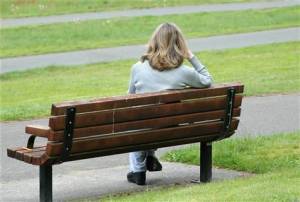
In March 2010, Massachusetts General Hospital’s cafeteria got an overhaul. Healthy items were labeled with a “green light,” less healthy items were labeled with a “yellow light,” and unhealthy items were labeled with a “red light.” Healthier items were also placed in prime locations throughout the cafeteria, while unhealthy items were pushed below eye level.
The “Green Light, Red Light, Eat Right” method is a favorite among experts fighting childhood obesity. But doctors at Massachusetts General wanted to know if the colors could really inspire healthier eating habits among adults long-term.
The results of their study were published Tuesday in the American Journal of Preventive Medicine.
The study
A cash register system tracked all purchases from the hospital’s large cafeteria between December 2009 and February 2012. The first three months of data were used as a baseline for comparison purposes. In March 2010, all food and beverages were labeled with a visible green, yellow or red sticker. Those with a green sticker were put at eye level and in easier-to-reach places.
Signs, menu boards and other promotions were used to explain the changes around the hospital.
The cafeteria had an average of 6,511 transactions daily. Approximately 2,200 of those were from hospital employees who used the cafeteria regularly. Twelve months into the study, researchers analyzed the number of purchases from each color group, and compared them to the baseline totals. They did the same at the end of the 24-month period.
The results
The number of red items purchased during the study period decreased from 24% at the baseline to 21% at both the 12 and 24-month follow-ups. The biggest decrease was seen in red-labeled beverages (such as regular soda) – from 27% at baseline to 18% at 24 months.
Sales of green items increased from 41% to 46%.
In other words, cafeteria-goers bought more water and purchased healthier food items during the study period than they did before the traffic light system went into place.
Employees showed the biggest improvement; their purchases of red items decreased by about 20%.
Takeaway
“These results suggest that simple food environment interventions can play a major role in public health policies to reduce obesity,” the study authors write.
Lead study author Dr. Anne Thorndike wasn’t sure that the changes seen early in the study would last over the two-year period. The consistent results at 24 months suggest people won’t grow tired of or immune to helpful food labels, she says.
Thorndike does not believe the color coding system can replace more detailed nutrition information, but says the labels “convey some basic nutrition information in a format that can be quickly interpreted and understood by individuals from diverse backgrounds.”
It’s unclear if the traffic light system produced the change in consumers’ behavior or if it was the rearrangement of items in the cafeteria.
Use it at home
“Families could utilize this concept by categorizing foods in the household as ‘green’ or red,'” Thorndike says. “For example, you could have a ‘green’ snack drawer or shelf on the refrigerator that the kids could freely choose from, and you could designate a ‘red’ drawer in which the kids would need to ask permission before taking a snack.”
Parents can also rearrange their cupboards to put healthier snacks front and center. Sorry, cookies – it’s the dark corner up top for you.
Source: the chart










 One of the unfortunate realities of Canada’s monopolistic health-care system is that some people feel they have no choice but to seek the care they need outside the country.
One of the unfortunate realities of Canada’s monopolistic health-care system is that some people feel they have no choice but to seek the care they need outside the country.